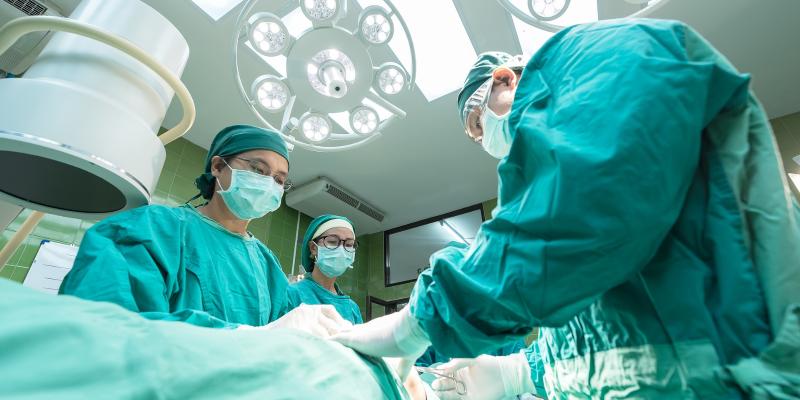Doctors reassure us of the safety and painlessness of bone marrow aspiration; and that its transplantation can save people from death - e.g. leukaemia patients. Finding a donor is, however, difficult – he/she has to be a histocompatible donor, while the histocompatibility complex has over a billion possibilities.
Bone marrow transplantation is a treatment method of many haematological malignancies (leukaemia, lymphomas, multiple myeloma) and some non-malignant disorders (bone marrow aplasia, congenital defects of haematopoiesis and immunity).
What is bone marrow needed for?
Bone marrow consists of haematopoietic stem cells capable of generating all types of blood cells.
These cells are also found in peripheral blood but there is much less of them there. Umbilical cord blood, that is blood which remains in the placenta and in the umbilical cord after childbirth, can be used for transplantation as well. Therefore, the expression “marrow transplantation" is more and more frequently substituted for “haematopoietic cell transplantation."
Who can be a donor?
A marrow donor can be any healthy person between 18 and 50 years of age. In extreme cases bone marrow can be taken from a child.
Giving bone marrow to an unrelated recipient is anonymous and does not involve any charge.
The decision on the qualification of a donor is always made by a doctor – initially, for applying to join the Central Register of Unrelated Donors of bone marrow, and then the second application, in the case of potential donation.
Why is the register of donors so important?
As is emphasised by the Ministry of Health, only one-in-four patients can receive bone marrow from a related donor. That is why the alternative provided by the register of donors is so important.
The probability that a person entered onto the Register will ever become a donor is about 1:200. This is because the cell donor has to be a histocompatible donor, i.e. within the loci of genes defined as the HLA system (the histocompatibility complex). Meanwhile, finding such a donor is difficult, as the HLA system has over 1 billion permutations.
Is there anything to be afraid of?
Bone marrow is usually removed from the hip bones by inserting special needles. During the procedure a about two hundred millilitres to one litre of bone-marrow are harvested. This depends on the recipient's body weight, but it can never reach more than 25 ml of bone-marrow per one kilogram of the recipient's body weight.
Many people are afraid that bone-marrow aspiration is painful. However the procedure is performed under general or epidural anaesthesia, which completely eliminates pain. Afterwards, some donors can feel a slight pain in the lower back for several or over a dozen days.
Bone marrow cells have great recovery abilities – complete bone-marrow restoration can take place over the next few weeks. Even after a few days following the procedure a donor can return to work.
As the Ministry of Health reaffirms, these are totally-safe procedures – several hundred thousand bone-marrow collections have been carried out so far in the world, and the same number of stem-cell collections from peripheral blood.
How can you become a donor?
The willingness to become a donor is declared by filling in a form - “A statement of intent to be entered onto the Central Register of Potential Unrelated Bone Marrow and Cord Blood Donors" - which is available in blood-donation centres and on the Internet. One can also report to the Polish Transplant Coordinating Centre “Poltransplant."
Having filled in the statement, one should report for a medical check-up to the appointed healthcare facility (e.g. the Regional Centre for Blood Donation).
A blood sample is collected from the putative donor in order to identify the HLA antigens. The results are transferred onto the global database and by this means they are made available to transplant centres worldwide.









Comments (0)